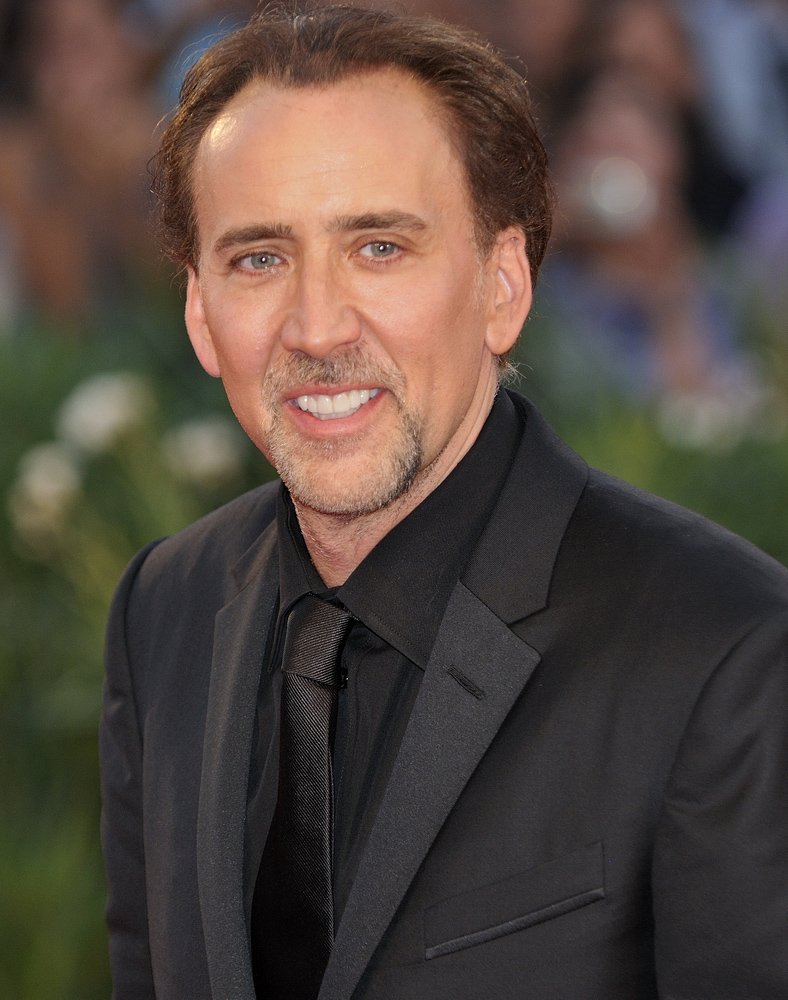Left: Photo courtesy of Nicolas Genin via Wikimedia Commons. Right: Photo courtesy of Gage Skidmore via Wikimedia Commons.
Nicolas Cage as Dracula and Nicholas Hoult as Renfield team up for a contemporary, ridiculous, and gruesome rendition of the classic horror movie.
Woodlief McCabe ’23
Staff Writer
“Renfield” is a ridiculous, campy and excessively gory new adaptation of the story of Dracula — it is fantastic, provided that those adjectives appeal to you. The film pays its dues to the Draculas that came before it, even making direct cinematic references to the 1931 “Dracula” starring Bela Lugosi. The backstory comes in a “flashback” montage that recreates moments from that film, including the iconic lighting that illuminates just his eyes. Set in present-day New Orleans, Robert Montague Renfield (Nicholas Hoult), Dracula’s familiar, finds himself hoping to escape Dracula’s control. He has been serving Dracula (Nicolas Cage) for 90 years, bringing him victims and defending him from his enemies. In exchange, he receives agelessness and a fraction of Dracula’s powers, which he activates by eating insects.
Renfield attends a support group for those seeking to exit codependent relationships, where he finds the encouragement to become independent. Elsewhere, Officer Rebecca Quincy (Awkwafina) is desperate to do something to take down the Lobos, a local crime family, who killed her police officer father, but the cops are all on their payroll. When Renfield saves Quincy’s life against the Lobos, Teddy Lobos (Ben Schwartz) vows to track him down. Having done a good deed for the first time in decades, Renfield discovers a new sense of purpose but has inadvertently led Teddy to an even greater source of power for his family: Dracula.
The film attempts to push a budding romance between Renfield and Quincy, but it ultimately focuses instead on Quincy’s relationship with her sister. The two leads still make a good team, as they both attempt to exit situations in which they are exploited and undervalued. Quincy must leave the force to actually make positive changes in her community.
When violence dies down, the film has a few sensitive moments and discussions about life’s purpose and how we find ourselves in toxic relationships. And then Renfield eats a bug and kicks a guy so hard he explodes.
Remakes and reimaginings of old classic horror media often attempt to reinvent the genre and the monster. “Renfield” is smart because it does not try to change the mythology around the vampire. It is a horror-comedy that roots itself in the original “Dracula” while opening up the classic caped villain to more dimensions of character than before. Cage echoes the stylings of previous Draculas, but he brings the eccentric personality that only Nicolas Cage can: he focuses on embodying his interpretation of the character through his movements and voice. Cage does not hold back from either the comedy or the horror. He manages to be both threatening and overdramatic, slashing someone open one minute and getting into a domestic spat with Renfield the next.
Hoult plays Renfield well as a meek servant who has lost sense of who he is, in the midst of learning to be a hero for the first time. We see him try to stand up for himself under Dracula’s withering gaze as he shakily reads from a book about dealing with narcissists. This scene mimics a sort of exorcism, but instead of Latin chants, Renfield reads aloud positive affirmations: “I am enough, I have enough, I’ll be the one at full power!”
Bringing horror and comedy together is a specific art form; “Renfield” does this well. The comedy is well-written and acted, as much of the humor comes from the plot and the dialogue as it does from the actors’ choices, costumes and the spaces they are in. It is also wildly gruesome. The fight scenes are creative and well-choreographed. There are moments when characters lose more blood than I think any human could possibly have. Bones are crushed, heads and limbs are ripped off and there is more than one pile of bodies. Dracula starts the film weakened, appearing as though he is decaying, essentially a walking corpse. The makeup is very well done here and Cage looks quite revolting. As the movie progresses, and his power grows, he appears less rotted. The gross-out factor is played up when Renfield puts a lot of bugs in his mouth.
The attention to visual detail in this film is part of what makes it so engaging to watch. The aesthetic is maximalist to the max. One of the first fight scenes takes place in a warehouse filled with colorful animal statues, and Teddy Lobos meets with his mother in a room full of threatening-looking instruments, presumably for mob-related torture. Dracula’s home base is in an abandoned hospital. The crumbling walls set the scene, the room is filled with candles and in the center is what I can only describe as a blood tree — dozens of empty blood bags, strung up and connected to Dracula’s chair. Dracula’s costumes are all opulent, consisting of long capes and many rings, which we see through close-up shots. Renfield wears the same moth-eaten suit jacket and pants for the first part of the film, but after finding his independence, he is seen in a colorful sweater. His new apartment is the polar opposite of Dracula’s lair, made up of color block walls of pink and orange and furnished with a comfortable couch and pillows. It makes for a humorous confrontation when the Dark One himself, Dracula, lets himself in thanks to the welcome mat on the doorstep.
Horror-comedies and campy films tend to do poorly in initial reviews. This one is for those of us who are excited by what this film has to offer — not everyone does. It succeeds in its ridiculousness, through a somewhat absurd premise of Dracula’s assistant in a therapy group, and the comically graphic, over-the-top violence. Viewers will find themselves cringing at the gore, laughing out loud at the comedy and wanting to come back to catch all the details they missed the first time. “Renfield” might have mediocre scores on Metacritic and Rotten Tomatoes now, but I expect that in the coming years, it will be a cult classic with immense rewatch value.


